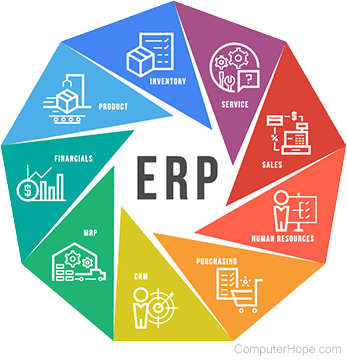There’s a persistent misapprehension I encounter whenever I discuss methodologies for Hub and Spoke solutions in the enterprise. This often surfaces in discussions, such as the one on the REG call handler thread I initiated on LinkedIn. The critique usually takes the form of: “This should be done by proper enterprise systems or IT systems.” A common sentiment is: Just because you can doesn’t mean you should.
Let’s unpack this.
The True Problem: Enterprise Systems Don’t Cover Everything
We’re not talking about replacing enterprise systems with Hub and Spoke spreadsheet solutions. Instead, we’re addressing a vast, overlooked area where enterprise systems fail to meet critical business needs. These gaps in coverage force users to create their own solutions with the tools at their disposal—most often Excel.
The existence of spreadsheets in enterprise workflows is undeniable. But why do they persist? Simply put: enterprise systems, in their current form, fail to cover essential business processes adequately. Here are some examples:
- Budgeting
Enterprise systems rarely align with the specific, nuanced requirements of individual businesses. This forces users to revert to spreadsheets for flexibility and accuracy. - Reporting
While enterprise systems generate financial statements and standard reports, these are often too rigid or generic. Finance teams export the data into Excel to create bespoke reports that suit their business context.
The Status Quo: A Legacy of Inefficient Practices
The prevalence of spreadsheet-driven processes isn’t just due to technological limitations. It also stems from entrenched organizational practices. Most spreadsheet processes mimic outdated paper flow paradigms, which are unnecessarily convoluted but remain conventional because they are what users know.
This inefficiency is perpetuated by social media influencers and free online training, which predominantly target the “bottom of the pyramid” audience. These influencers promote techniques designed for single users, inadvertently encouraging practices that are inappropriate in enterprise settings.
What we’re proposing is not a simple replacement of these inefficient practices but a transformation. By re-architecting processes, we introduce agility and create new opportunities that do not exist in current enterprise systems.
The Real Motivation Behind Enterprise Systems Implementation
Another key issue is the motivation driving the push for enterprise systems. In my experience, IT departments and finance teams often advocate for new systems not because of their effectiveness but because it enhances their résumés. Successfully implementing a new system, regardless of its long-term utility, is a career milestone for these professionals.
Unfortunately, these teams rarely have a deep understanding of actual business needs. They focus on buzzwords and trends, recycling terminology without truly grasping the problems they aim to solve. This disconnect can derail projects and lead to costly inefficiencies.
Our Goal: Transforming Spreadsheet Practices
What we’re addressing is not about replacing ERP systems but improving suboptimal spreadsheet practices that already exist. Left unchecked, these practices often result in fragile, inefficient solutions. For example, in the Mission Impossible series, I demonstrate how most people—when left to chance—will create solutions that are inherently flawed. These errors arise because they use Excel in ways that aren’t scalable or maintainable, following guidance that isn’t suited for enterprise-scale needs.
Examples of Suboptimal Thinking
I’ve observed scenarios where IT experts or “spreadsheet professionals” quickly dismiss innovative spreadsheet solutions by claiming they “can’t be done” or are better suited for enterprise systems. Consider these examples:
- Elaine Hope’s Daily Banking Process: Why did the experts insist it couldn’t be done? Because their thinking was constrained by rigid, traditional approaches.
- QCA Audit Solution: IT’s response was to create 125 new nominal accounts, an impractical approach dismissed by those who understood the real business implications.
These scenarios reveal a deeper issue: the failure to think creatively and critically about how spreadsheets can bridge gaps in enterprise systems.
The Bigger Picture
When we present our transformed solutions to management, they often see the potential for more agile, cost-effective ways of working. They recognize that IT’s typical response—asking for millions in budget to implement new systems—isn’t always the answer. Instead, they ask: Can we do this another way?
And this is where our methodology comes in. By showing management how to transform inefficient spreadsheet practices, we give them the tools to rethink processes and unlock new possibilities.
Conclusion
To address the recurring question—Why are you trying to do with Excel what ERP is doing?—the answer is simple: We’re not.
Our work is about transforming existing spreadsheet practices, not replacing enterprise systems. These practices exist because enterprise systems fail to cover all the necessary processes. By improving them, we’re not just fixing inefficiencies—we’re enabling businesses to operate in ways that enterprise systems alone cannot achieve.
This is a podcast by Hiran de Silva. Narrated by Bill.




Add comment